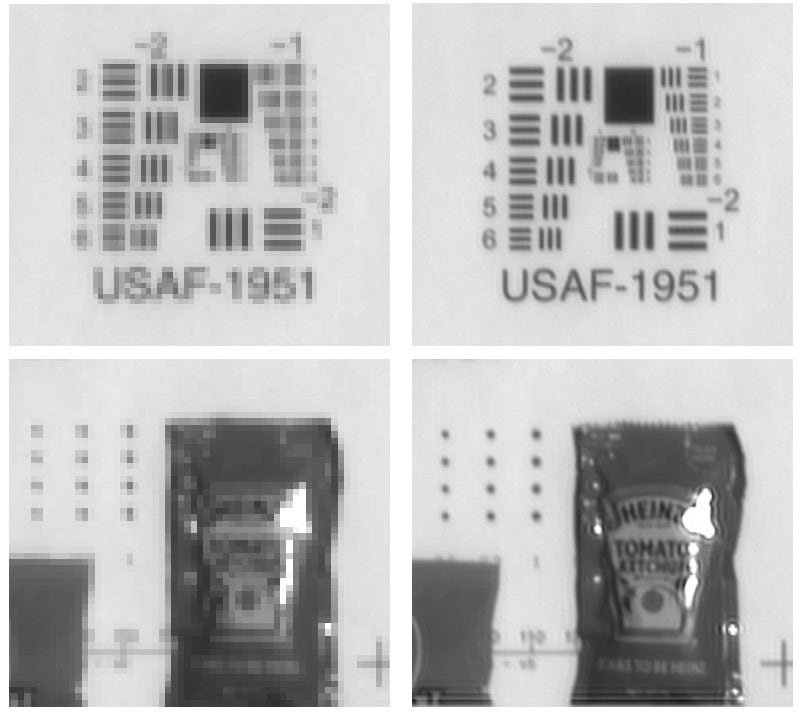Science
Researchers Enhance Image Resolution Using Motion Blur Techniques

A team of researchers at Brown University has developed a groundbreaking algorithm that enhances image resolution by utilizing motion blur—a technique traditionally seen as a disadvantage in photography. The innovation could enable standard cameras to produce images of gigapixel quality, with significant implications for fields such as biological imaging and archival preservation.
The research, co-led by Rashid Zia, focuses on the potential of computational photography to decode higher-resolution information that is inherently captured during camera motion. “We were interested in the limits of computational photography,” Zia explained. “We recognized that there should be a way to decode the higher-resolution information that motion encodes onto a camera image.”
Conventional methods for reconstructing high-resolution images from lower-resolution sources typically rely on mathematical models. These techniques offer only modest improvements in clarity, especially when the original image suffers from motion blur. The new algorithm overcomes this limitation by accurately reconstructing high-resolution images from several low-resolution captures taken with a moving camera.
Pedro Felzenszwalb, a member of the research team, emphasized the novelty of their approach. “There was some prior theoretical work that suggested this shouldn’t be possible,” he noted. “But we show that there were a few assumptions in those earlier theories that turned out not to be true.”
Innovative Approach to Image Reconstruction
The researchers employed their algorithm to exploit the “tracks” left by moving light sources as the camera captures images. This method allows for the precise location of fine details, which are then reconstructed on a finer, sub-pixel grid. In practical trials, they tested the algorithm by capturing images in various scenarios, including a grid of high-resolution locations and sequences taken while the sensor was in motion.
The findings revealed that the algorithm could generate images with significantly enhanced resolution compared to standard motion-blurred photographs. In one experiment, they simulated both single and multiple image captures while the sensor vibrated and moved along a linear path. These scenarios could have practical applications in aerial or satellite imaging.
“Our results are especially interesting for applications where one wants high resolution over a relatively large field of view,” Zia added. “This is important at many scales from microscopy to satellite imaging.” The researchers also see potential benefits in super-resolution archival photography of artworks and artifacts, as well as photography from moving aircraft.
As the team progresses, they are exploring the mathematical limits of their approach and planning practical demonstrations. Zia mentioned that results from experiments with consumer cameras and mobile devices, as well as setups involving scientific-grade CCDs and thermal focal plane arrays, are forthcoming.
“While there are existing systems that cameras use to take motion blur out of photos, no one has tried to use that to actually increase resolution,” Felzenszwalb stated. “We’ve shown that’s something you could definitely do.”
The research was presented at the International Conference on Computational Photography and is available on the arXiv pre-print server. This innovative work not only challenges existing theories but also opens new avenues for high-resolution imaging across various fields.
-

 Health3 months ago
Health3 months agoNeurologist Warns Excessive Use of Supplements Can Harm Brain
-

 Health3 months ago
Health3 months agoFiona Phillips’ Husband Shares Heartfelt Update on Her Alzheimer’s Journey
-

 Science2 months ago
Science2 months agoBrian Cox Addresses Claims of Alien Probe in 3I/ATLAS Discovery
-

 Science2 months ago
Science2 months agoNASA Investigates Unusual Comet 3I/ATLAS; New Findings Emerge
-

 Science1 month ago
Science1 month agoScientists Examine 3I/ATLAS: Alien Artifact or Cosmic Oddity?
-

 Entertainment5 months ago
Entertainment5 months agoKerry Katona Discusses Future Baby Plans and Brian McFadden’s Wedding
-

 Science1 month ago
Science1 month agoNASA Investigates Speedy Object 3I/ATLAS, Sparking Speculation
-

 Entertainment4 months ago
Entertainment4 months agoEmmerdale Faces Tension as Dylan and April’s Lives Hang in the Balance
-

 World3 months ago
World3 months agoCole Palmer’s Cryptic Message to Kobbie Mainoo Following Loan Talks
-

 Science1 month ago
Science1 month agoNASA Scientists Explore Origins of 3I/ATLAS, a Fast-Moving Visitor
-

 Entertainment2 months ago
Entertainment2 months agoLewis Cope Addresses Accusations of Dance Training Advantage
-

 Entertainment3 months ago
Entertainment3 months agoMajor Cast Changes at Coronation Street: Exits and Returns in 2025









